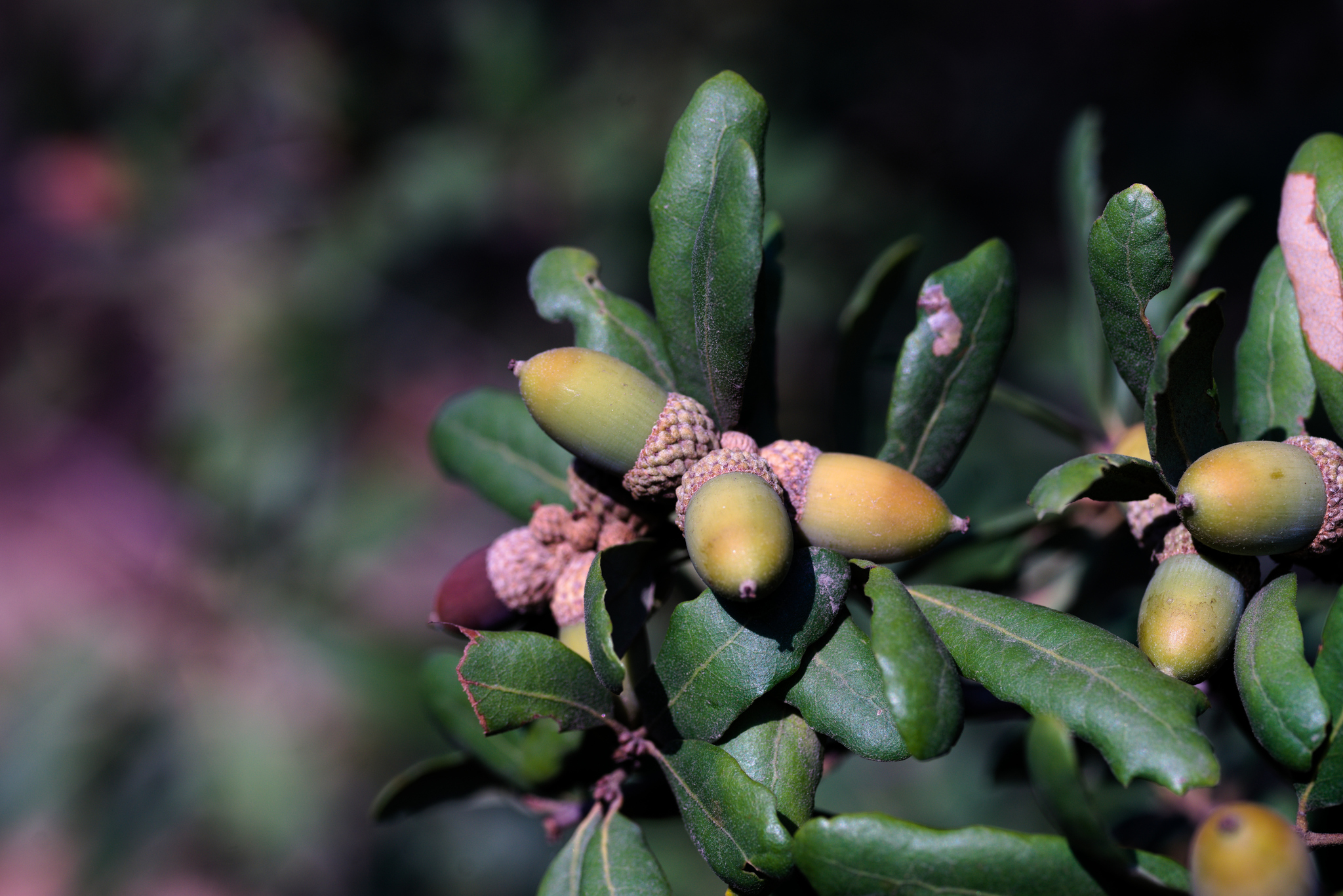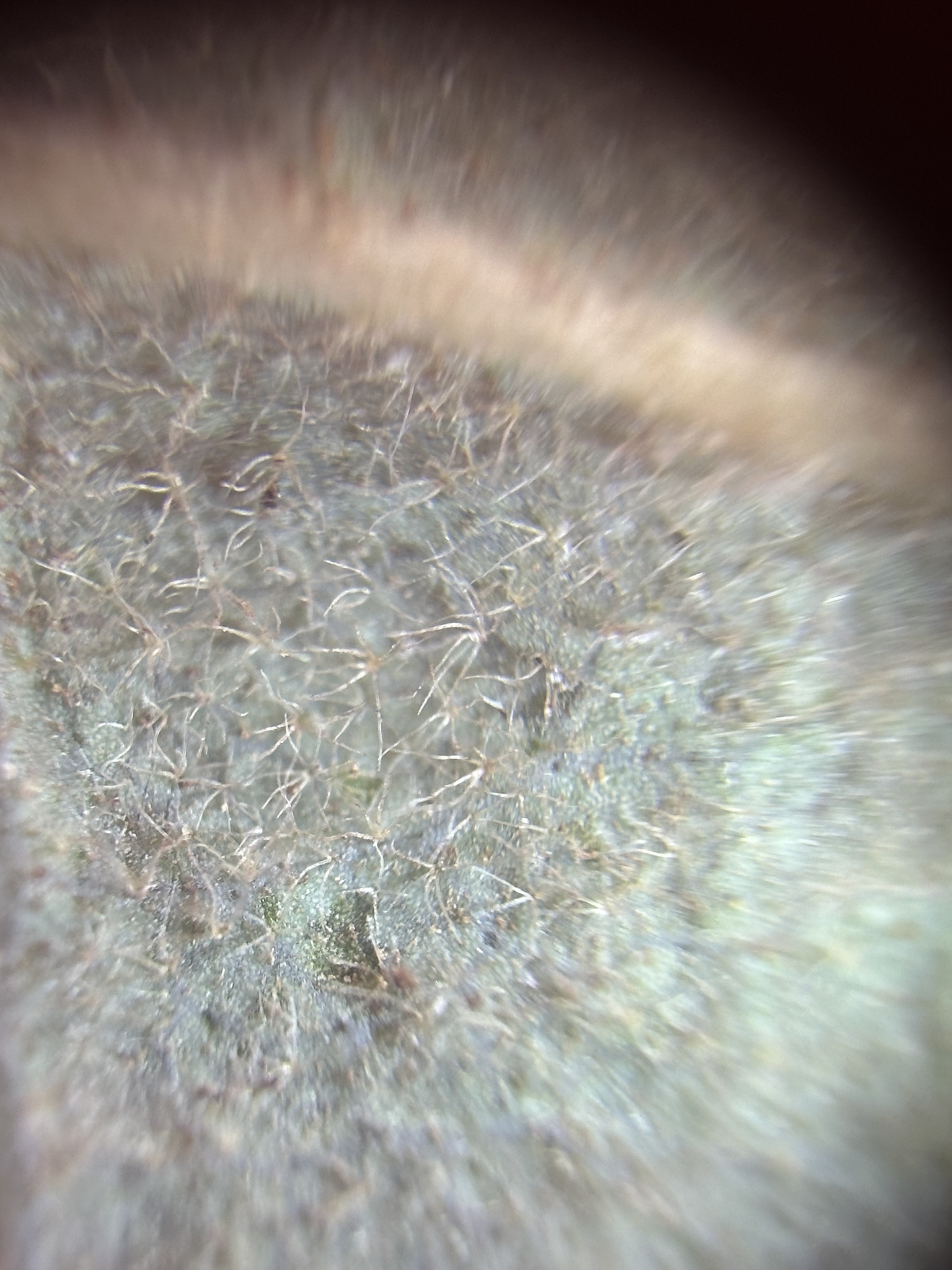
[*Photo by @possiblybuddha on iNaturalist*](https://www.inaturalist.org/observations/188739925)
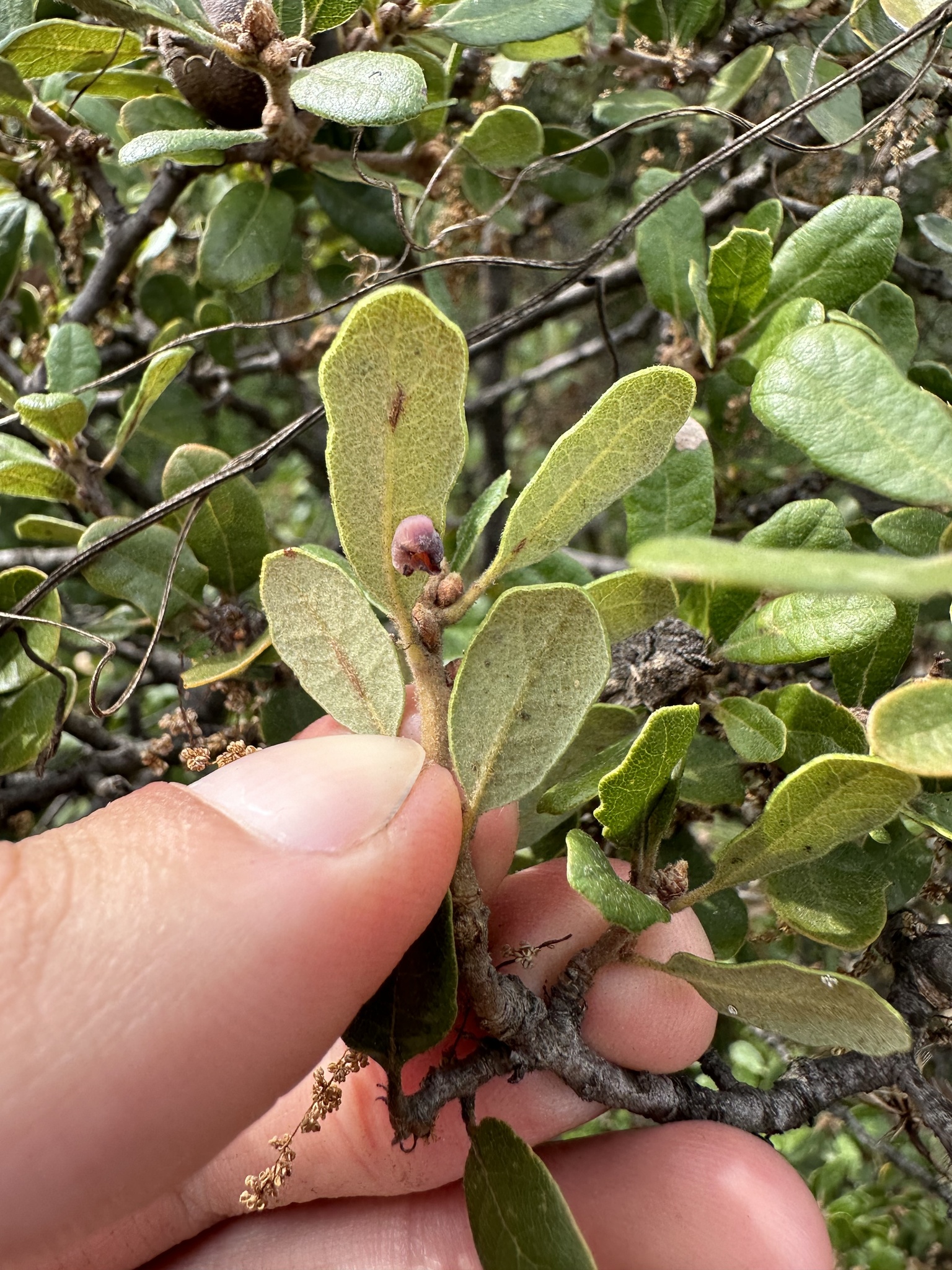
[*Photo by @possiblybuddha on iNaturalist*](https://www.inaturalist.org/observations/188739925)
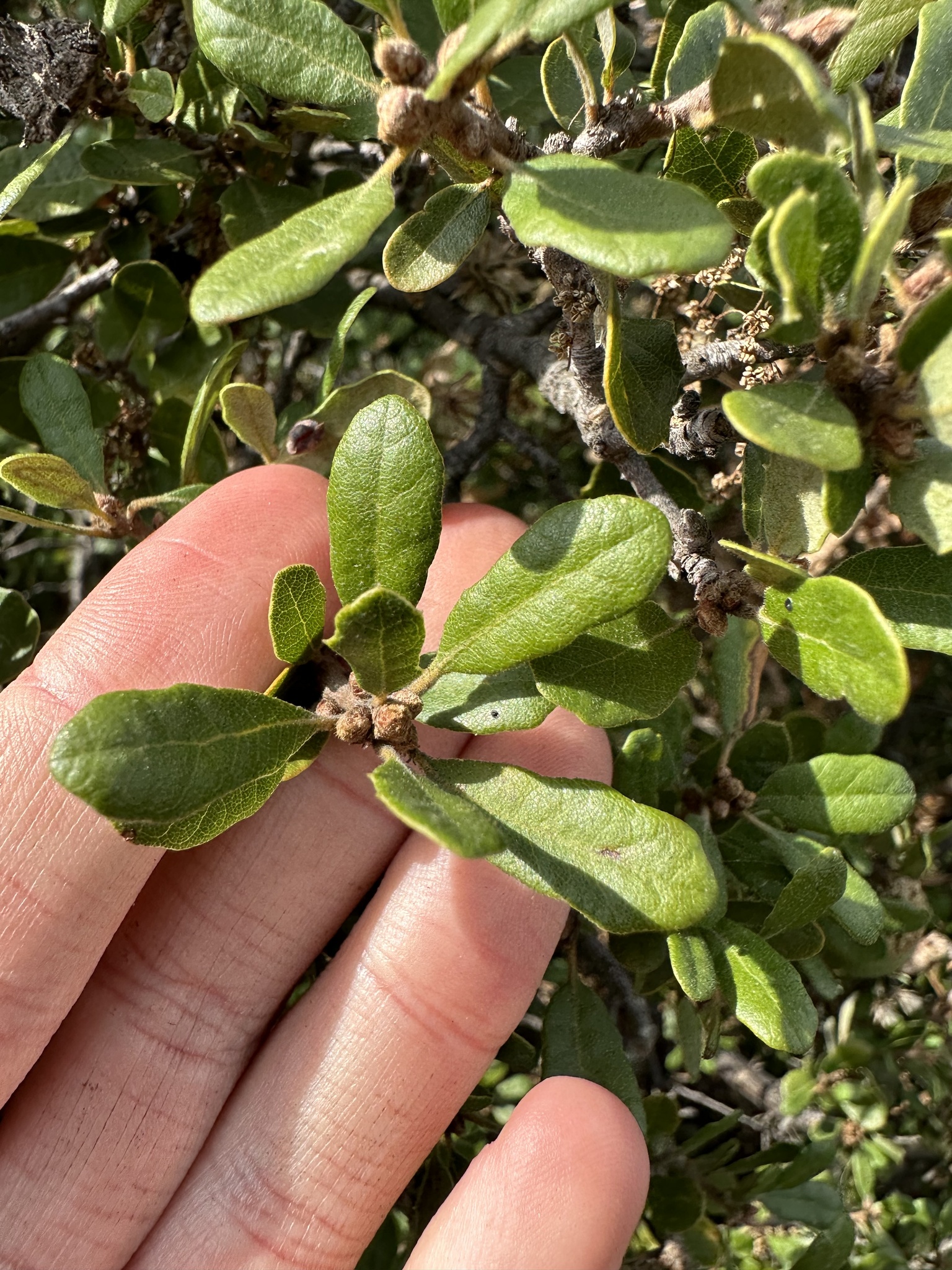
[*Photo by @possiblybuddha on iNaturalist*](https://www.inaturalist.org/observations/188739925)
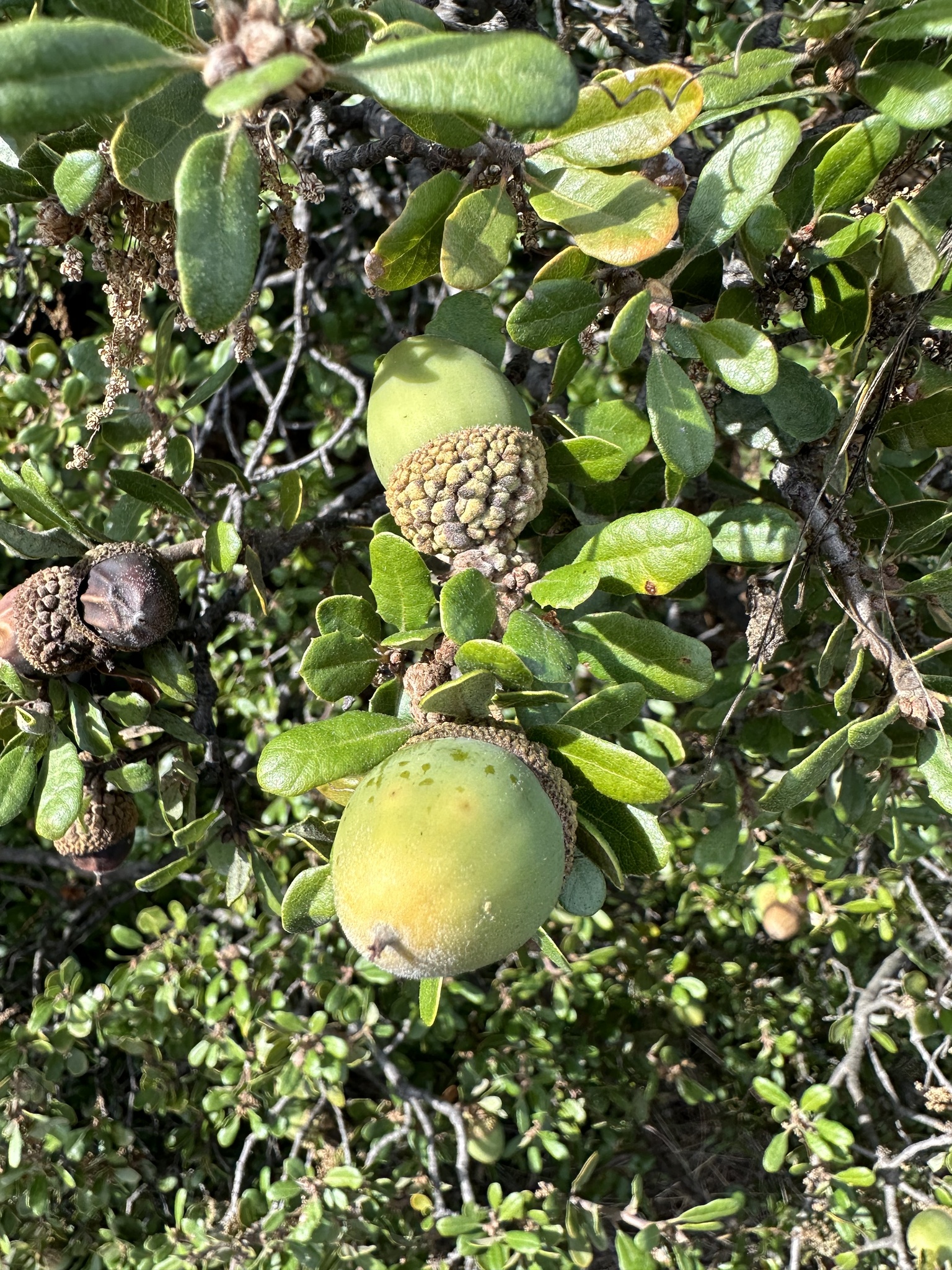
[*Photo by @possiblybuddha on iNaturalist*](https://www.inaturalist.org/observations/188739925)
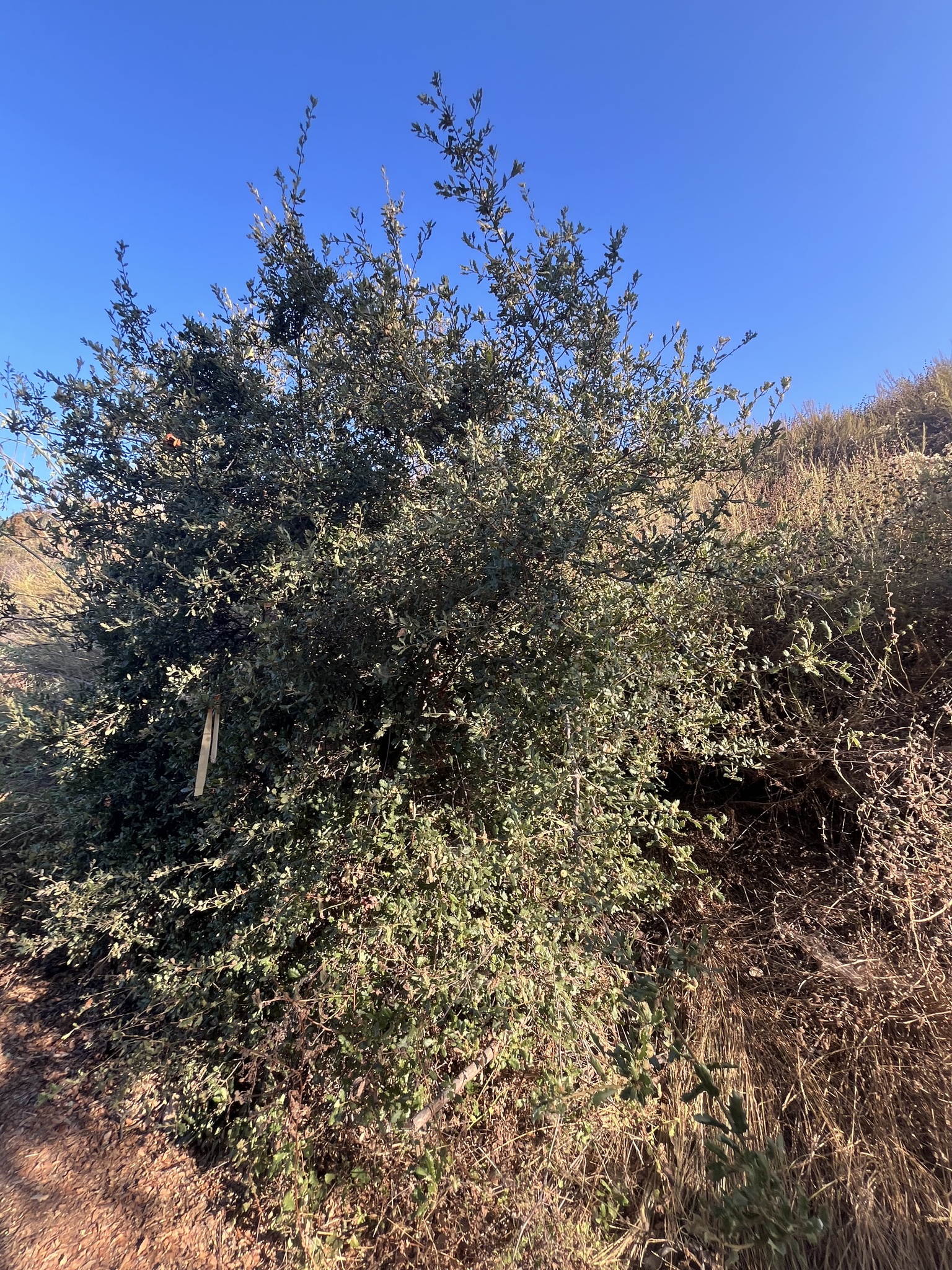
[*Photo by @gabimclean on iNaturalist*](https://www.inaturalist.org/observations/231767058)
## Scrub Oak - QB (*Quercus berberidifolia*)
Not very common in Altadena, but common across the state, and found in nearby areas like the Verdugos. Any scrubby/shrubby oak has a chance of being misidentified as QB because of its generic common name “Scrub Oak” (despite being one of many scrub oaks). Leaf underside (abaxial surface) appears glabrous (smooth) to naked eye. Trichomes visible at 60x magnification - usually far and few between. Tends to grow in mesic (moist) areas.
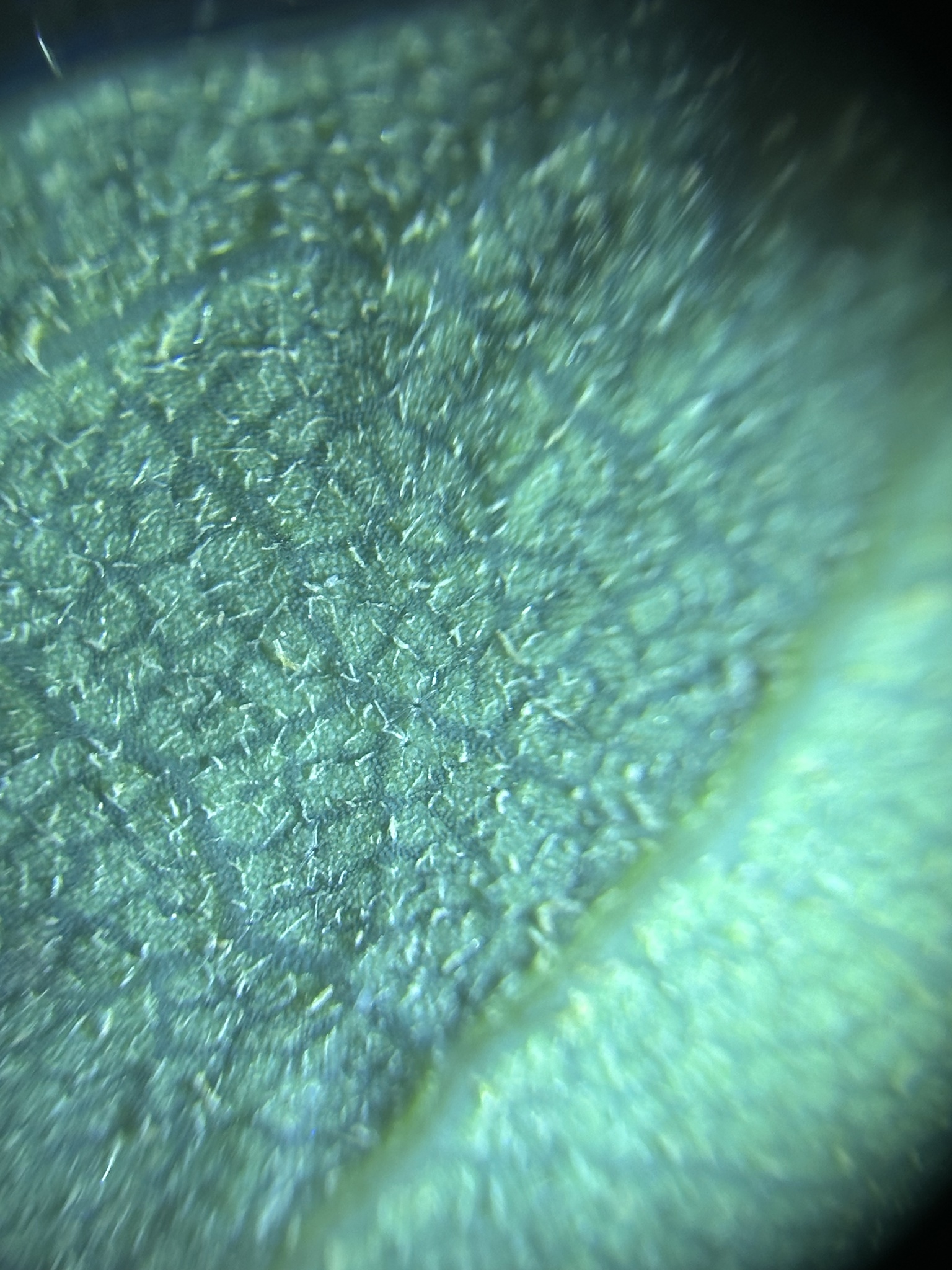
[*Photo by @possiblybuddha on iNaturalist*](https://www.inaturalist.org/observations/188743670)
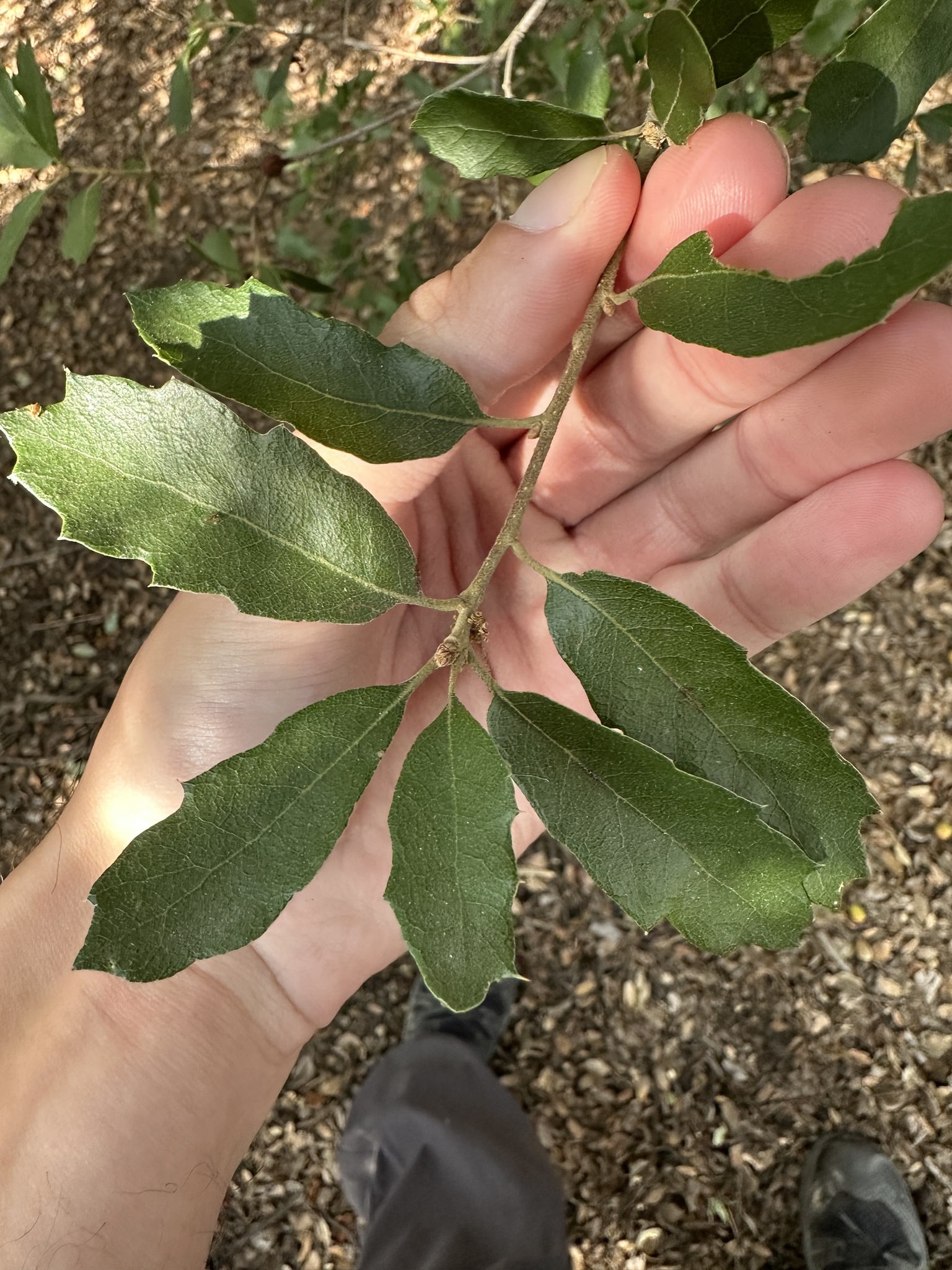
[*Photo by @possiblybuddha on iNaturalist*](https://www.inaturalist.org/observations/188743670)
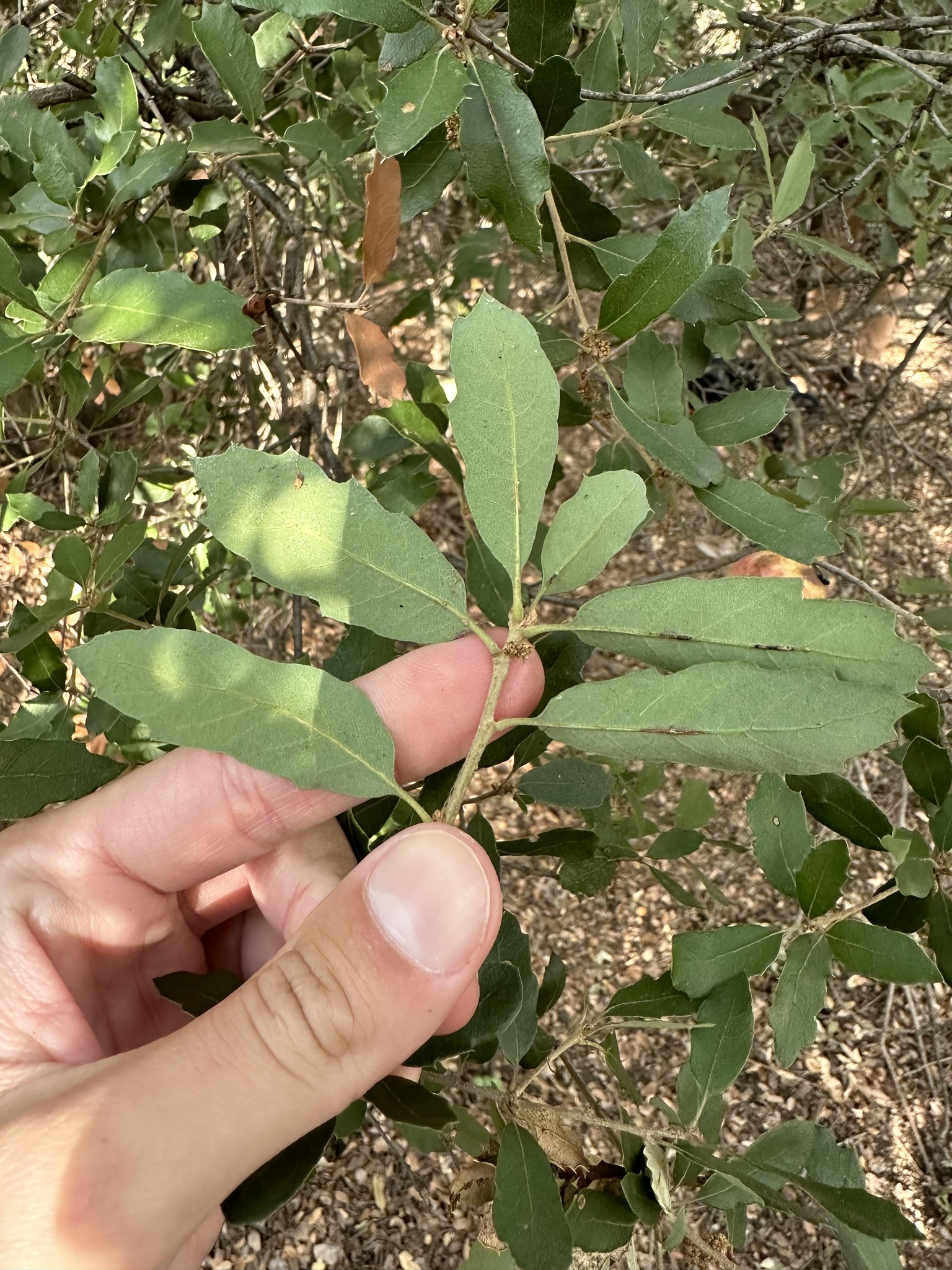
[*Photo by @possiblybuddha on iNaturalist*](https://www.inaturalist.org/observations/188743670)
## Engelmann Oak - QE (*Quercus engelmanii*)
A large stature tree. SoCal endemic. Also known as the Pasadena Oak, although most of the population is in OC/San Diego counties. Trichomes distinctly brown, long rayed, distinctly 3-dimensional form (akin to a crumpled napkin), visible to naked eye when abundant, but are readily deciduous (lack of QE trichomes does not necessarily indicate a specimen is not of QE heritage).
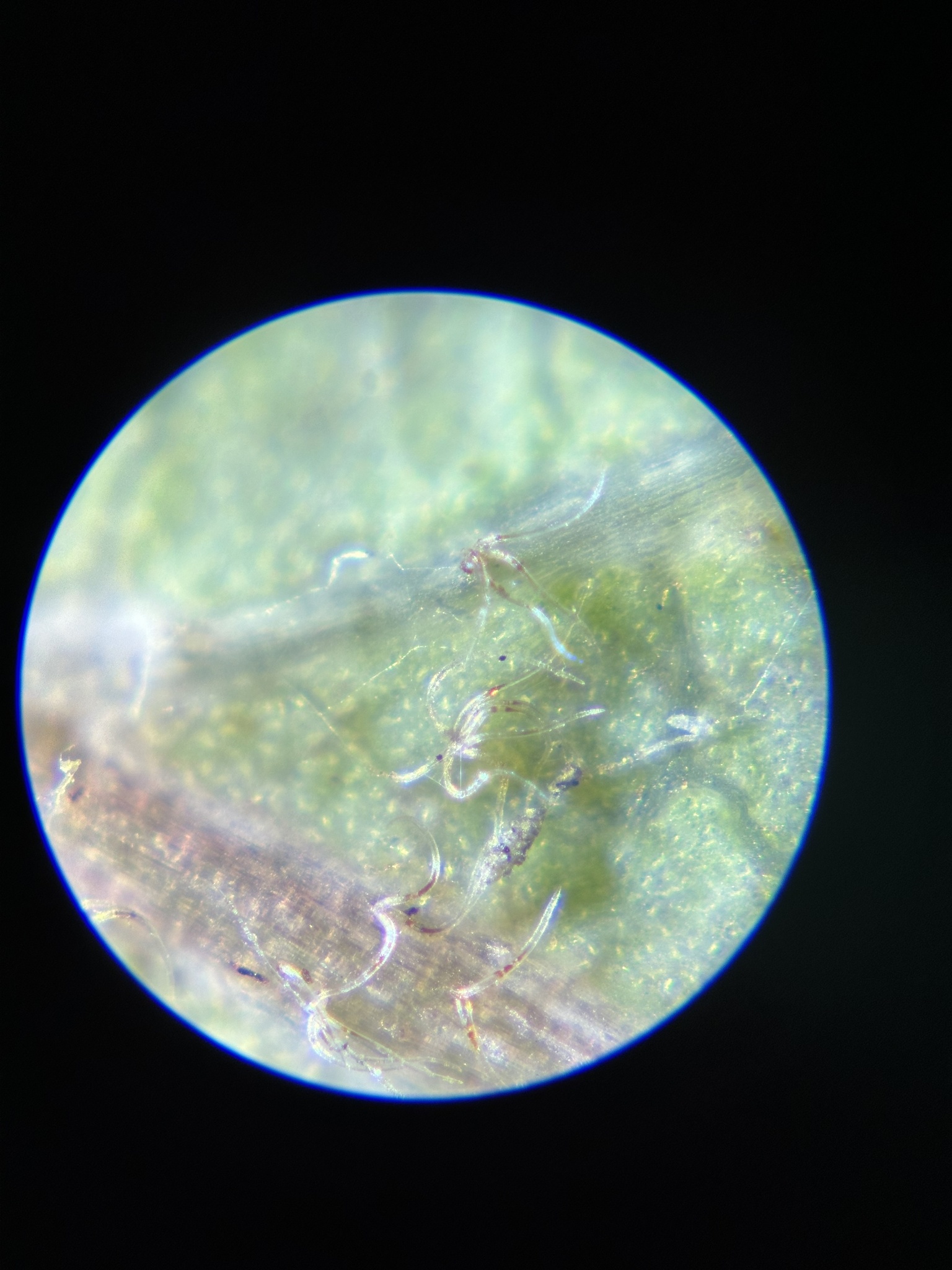
[*Photo by @possiblybuddha on iNaturalist*](https://www.inaturalist.org/observations/188955130)
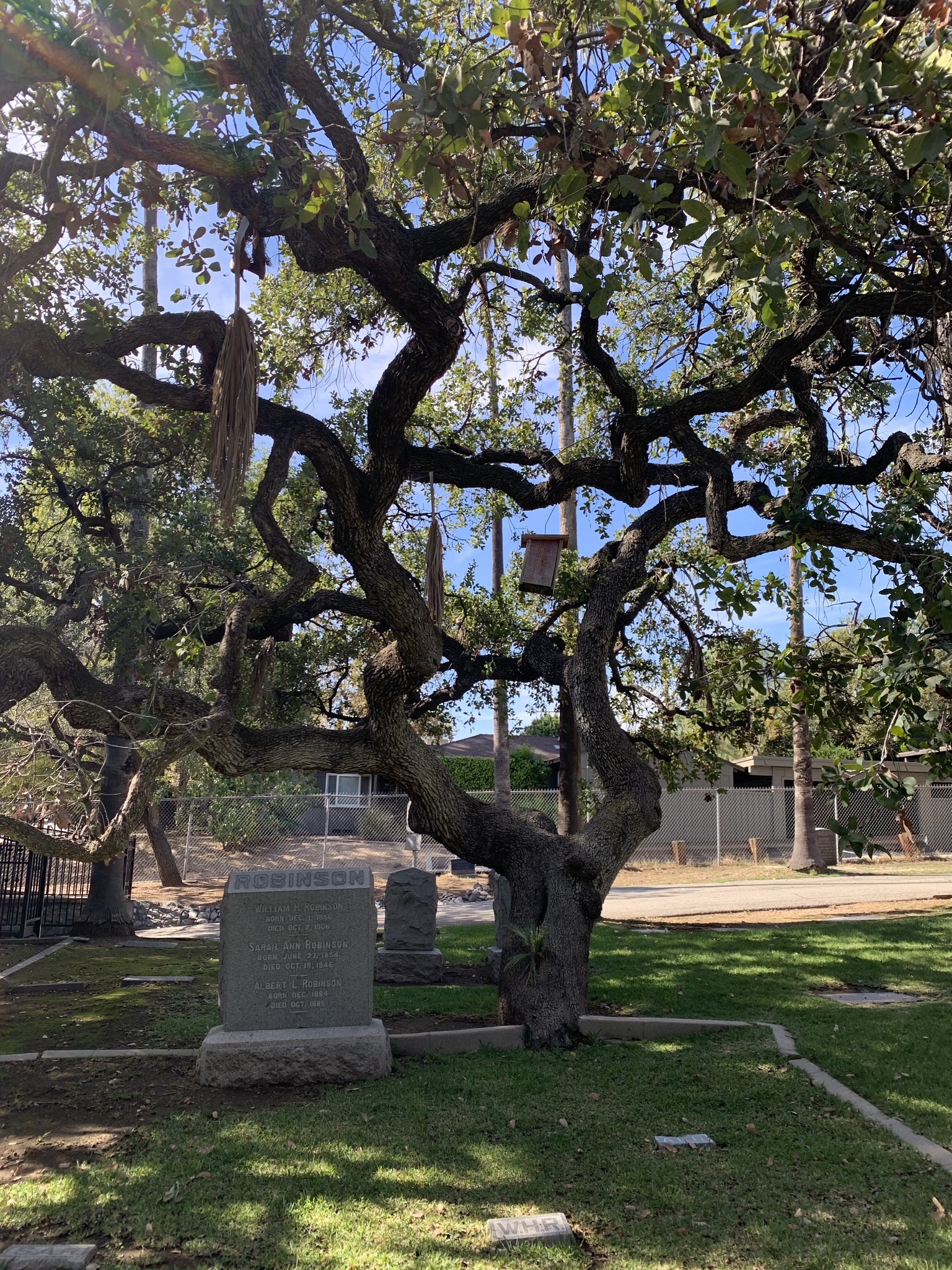
[*Photo by @possiblybuddha on iNaturalist*](https://www.inaturalist.org/observations/188955130)
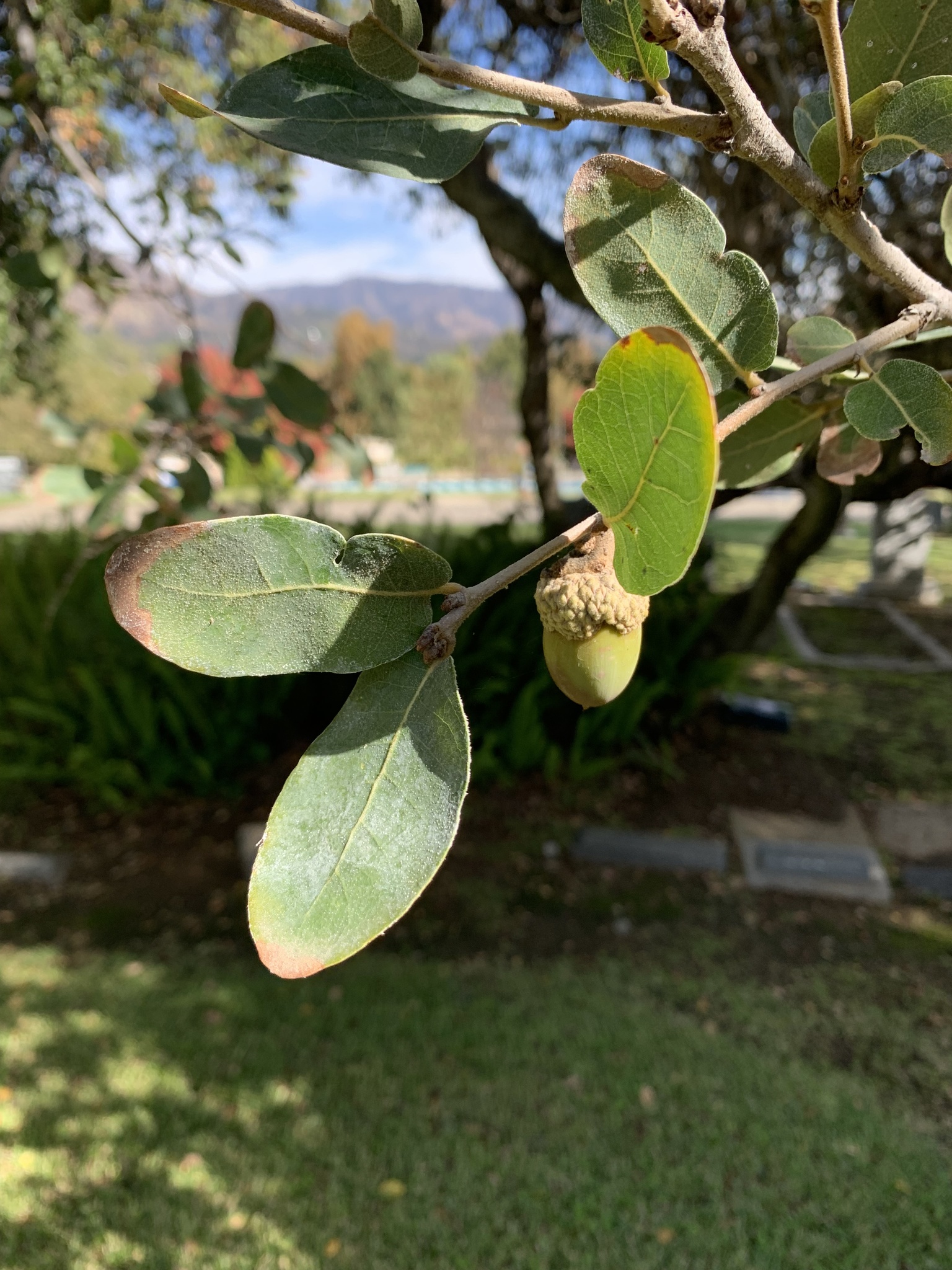
[*Photo by @possiblybuddha on iNaturalist*](https://www.inaturalist.org/observations/188955130)
## *Quercus x ewanii* (QDG + QE Hybrid)
Can have traits of either parent, in varying degrees. E.g. can be a large stature oak with leaf traits from QDG, or a scrub oak with leaf traits from QE (see two examples below).
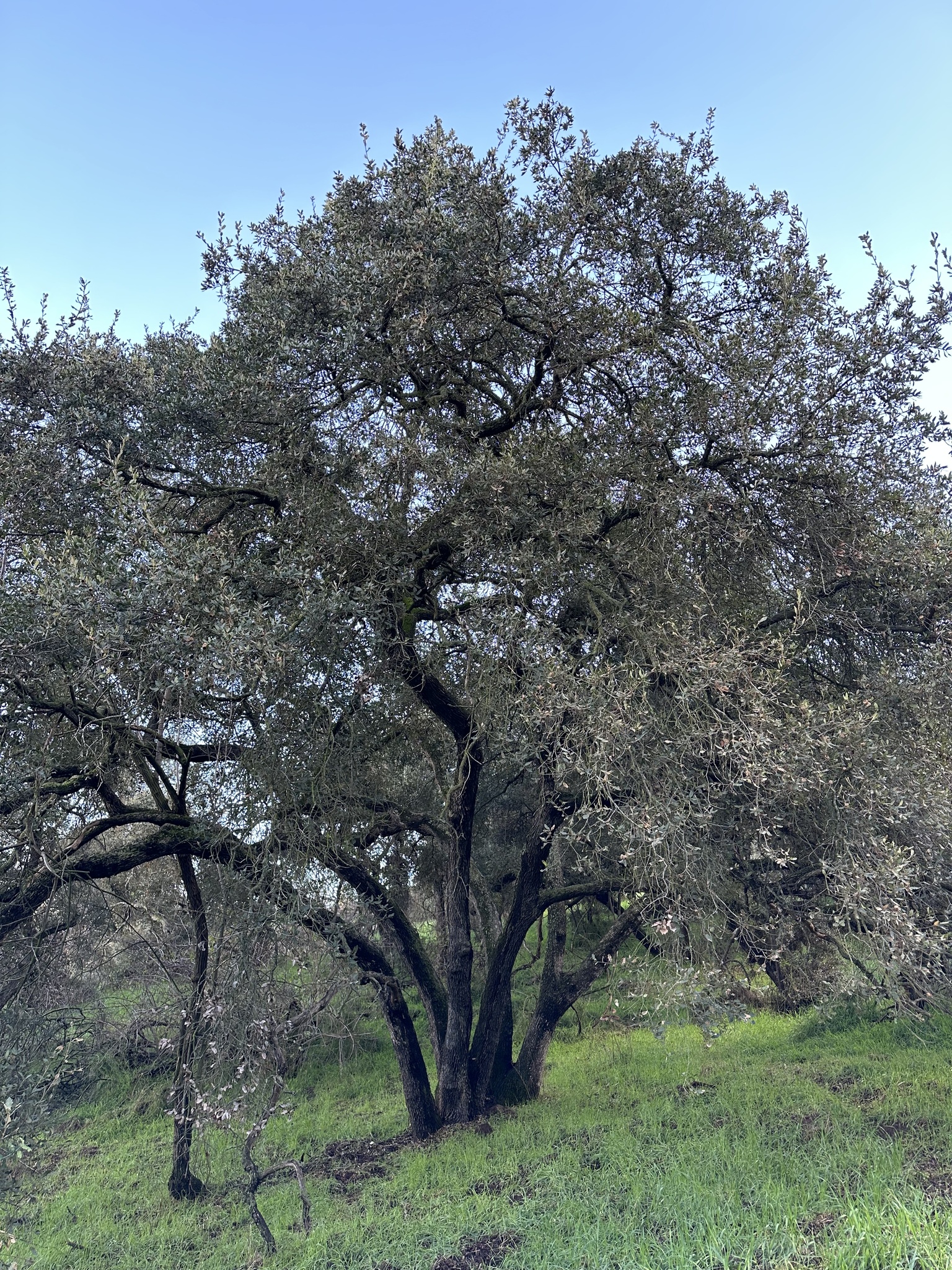
[*Photo by @possiblybuddha on iNaturalist*](https://www.inaturalist.org/observations/195729905)
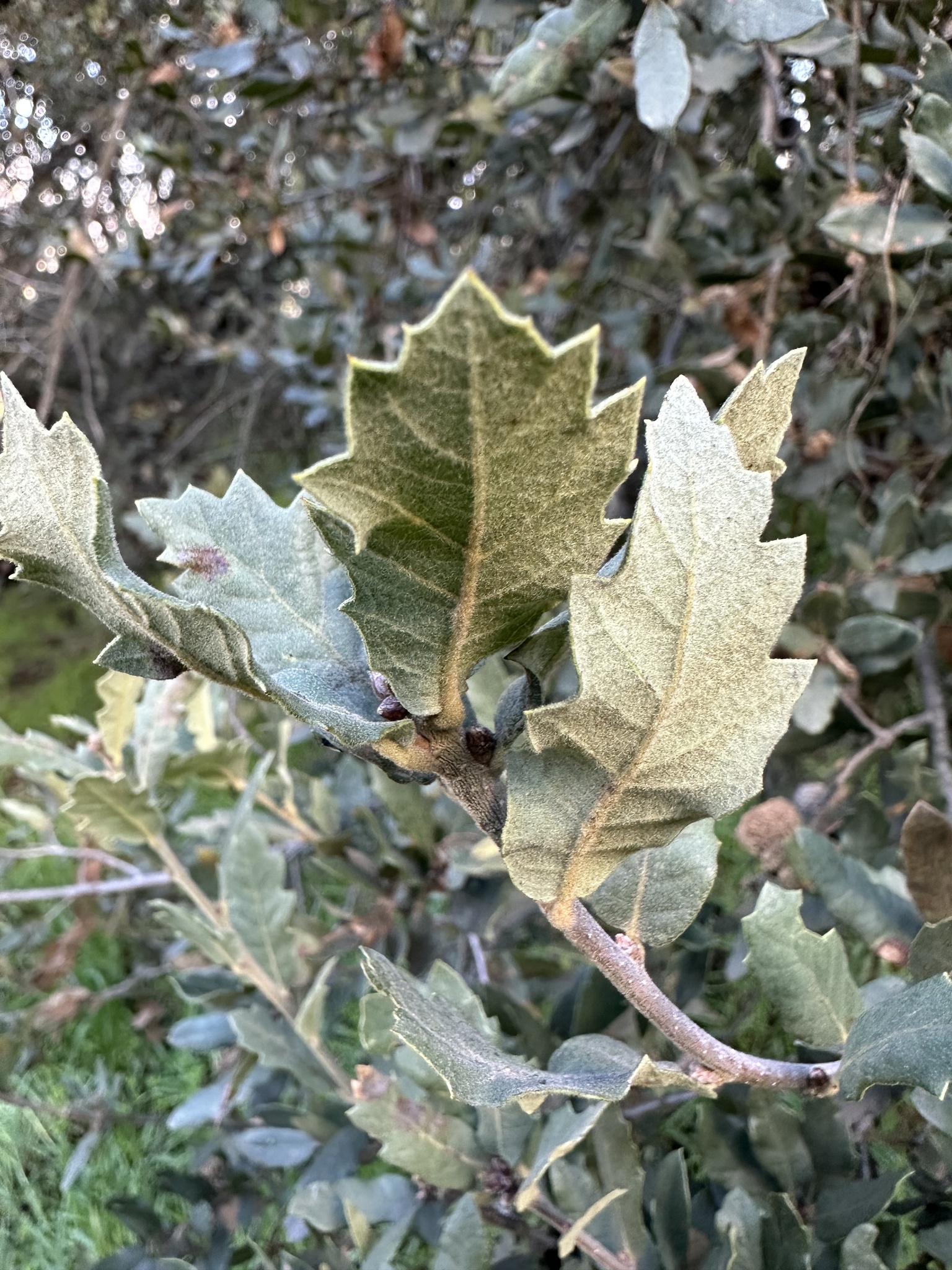
[*Photo by @possiblybuddha on iNaturalist*](https://www.inaturalist.org/observations/195729905)
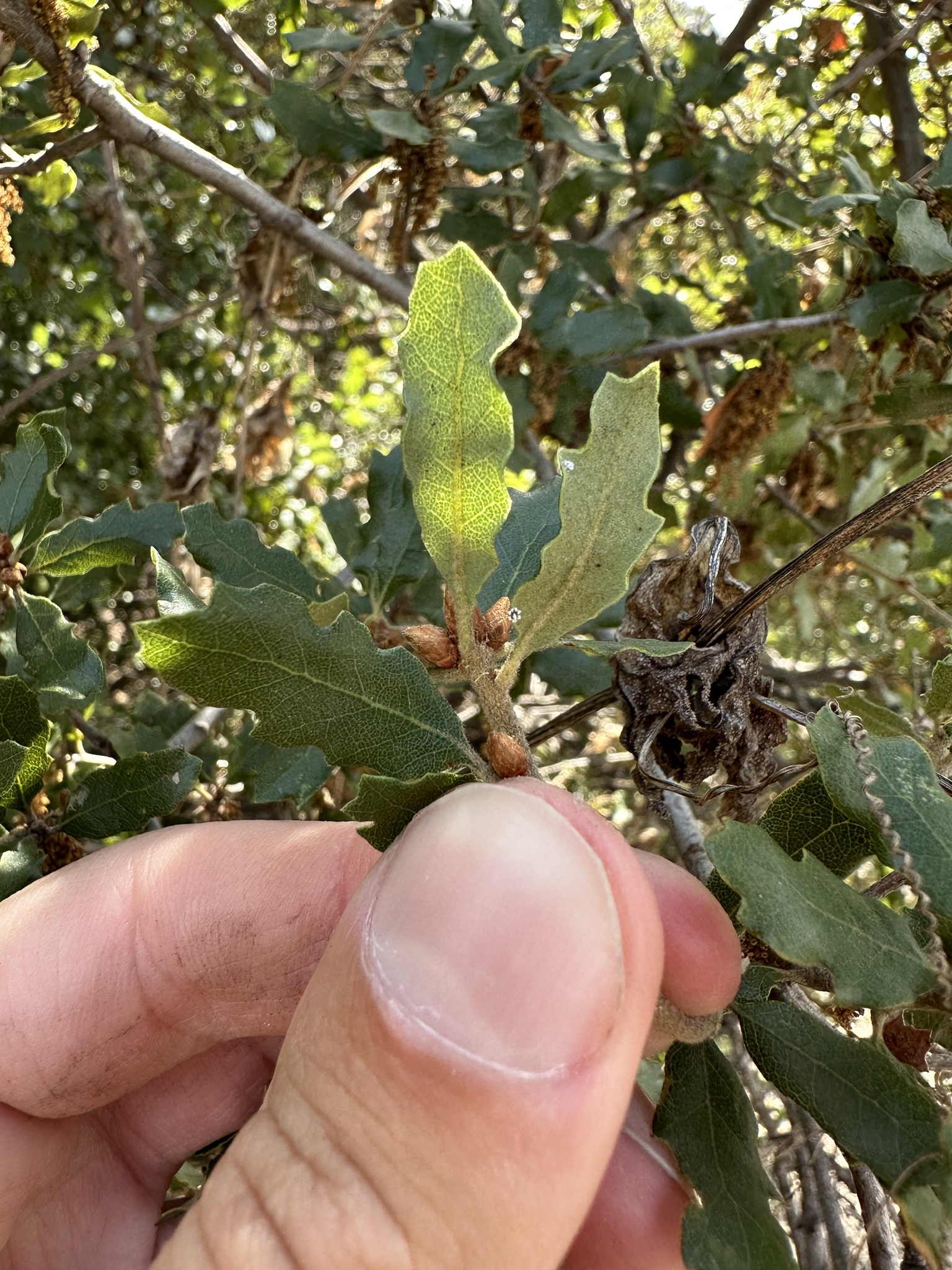
[*Photo by @possiblybuddha on iNaturalist*](https://www.inaturalist.org/observations/188742502)
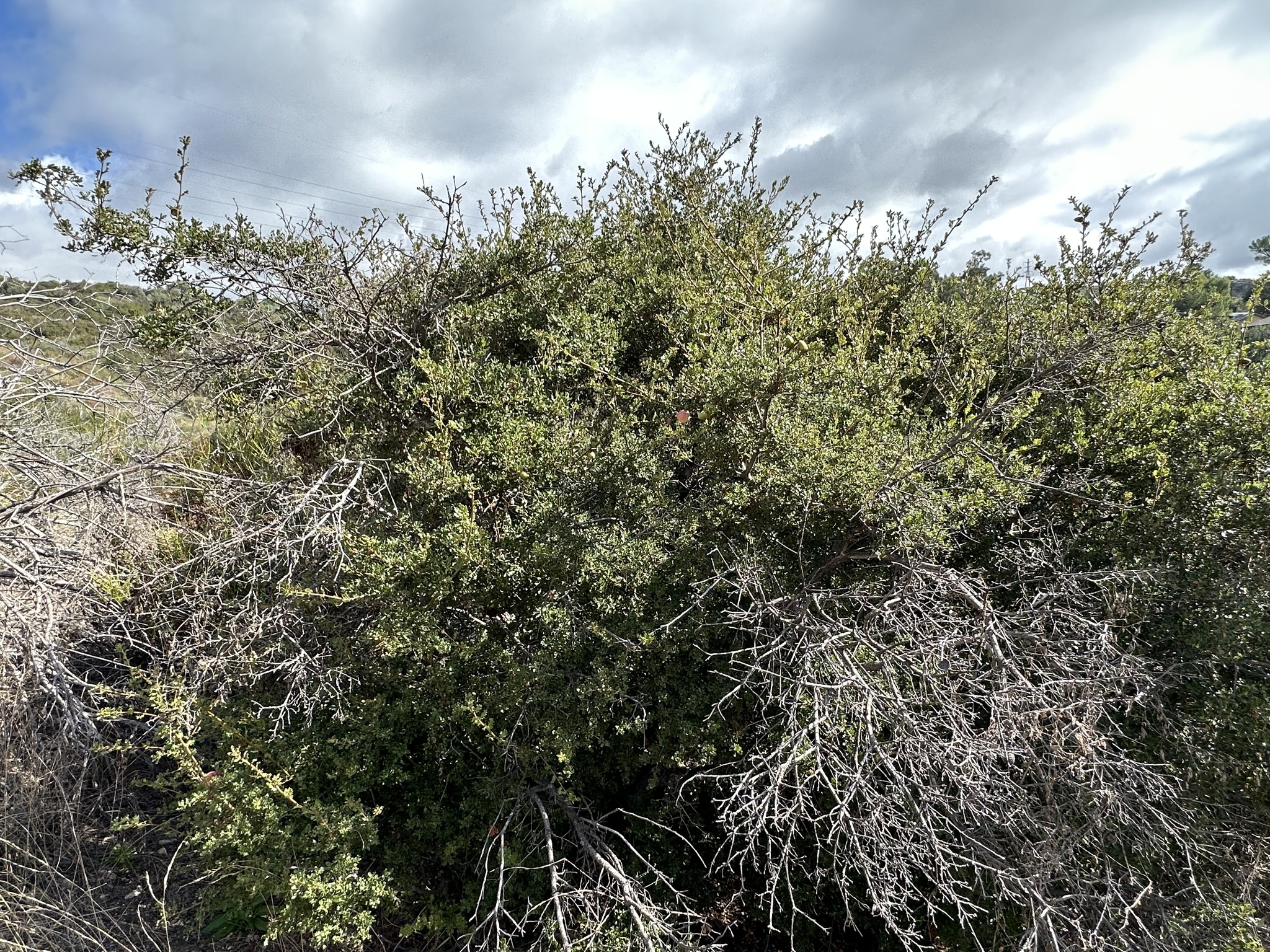
[*Photo by @possiblybuddha on iNaturalist*](https://www.inaturalist.org/observations/188742502)
# Intermediate Oaks
The Canyon Live Oak is the only oak in the [Quercus/Protobalanus section of the genus](https://en.wikipedia.org/wiki/List_of_Quercus_species#Section_Protobalanus).
## Canyon Live Oak - QC (*Quercus chrysolepis*)
This is a large-growth habit oak. It is relatively easy to identify due to size, acorns and location. The leaves are darker green on top, lighter on the bottom, and can be serrated or not. The acorns are very large with a distinctive cap.
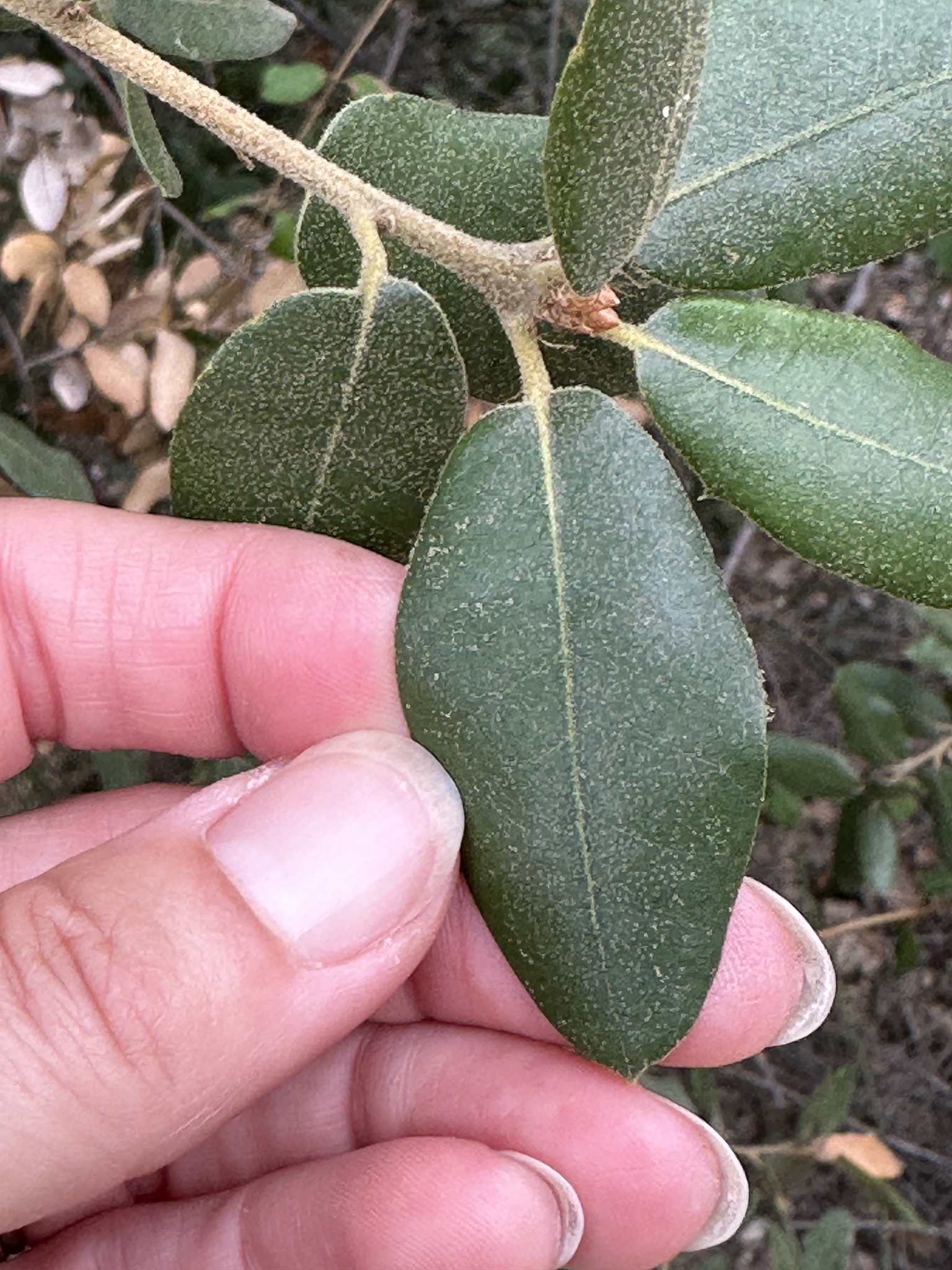
[*Photo by @adirado on iNaturalist*](https://www.inaturalist.org/observations/183450047)

[*Photo by @quercusboletus on iNaturalist*](https://www.inaturalist.org/observations/203543305)
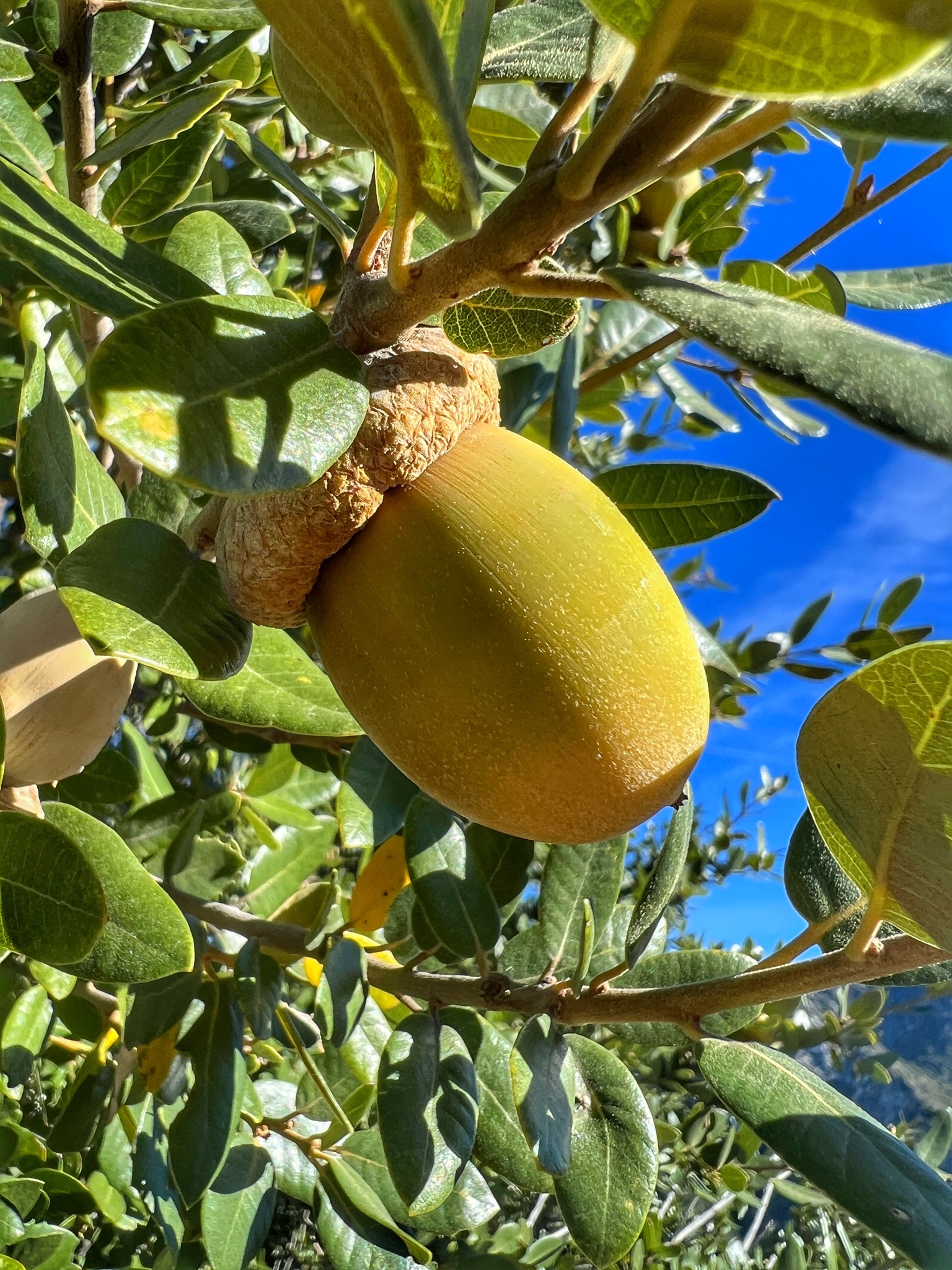
[*Photo by @aachkinazi on iNaturalist*](https://www.inaturalist.org/observations/190154752)
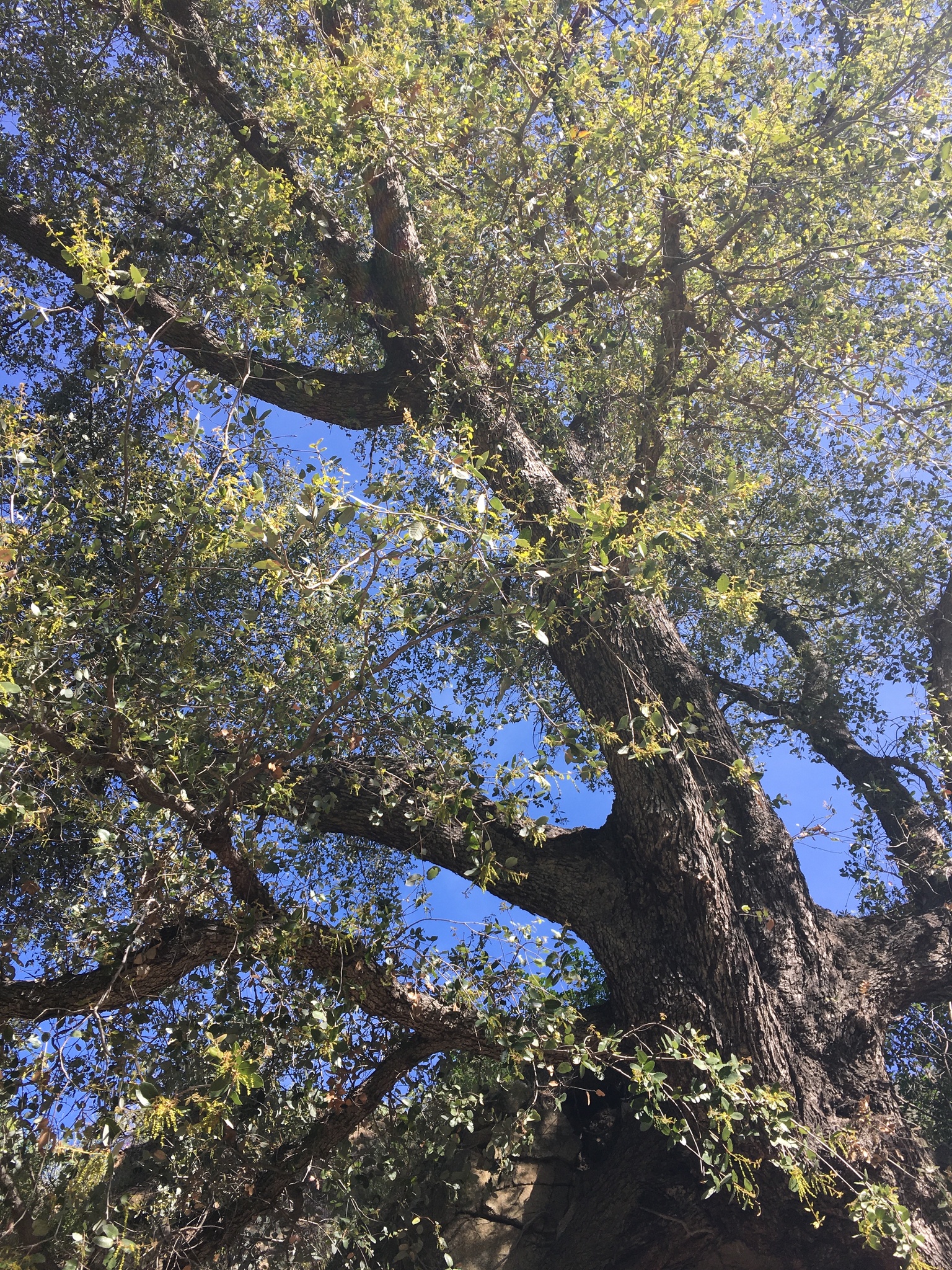
[*Photo by @adrineaa on iNaturalist*](https://www.inaturalist.org/observations/109234221)
# Red Oaks
There are three oaks you may come across in the [Quercus/Lobatae section of the genus](https://en.wikipedia.org/wiki/List_of_Quercus_species#Section_Protobalanus).
## California Live Oak - QAA (*Quercus agrifolia var. agrifolia*)
This is the most common Oak in California, and LA County. It is used widely as a street tree. It has a large growth habit, leaves that are serrated, cupped, and are the same shade of green on top and bottom. The acorns are long and skinny with scaled cupolas.
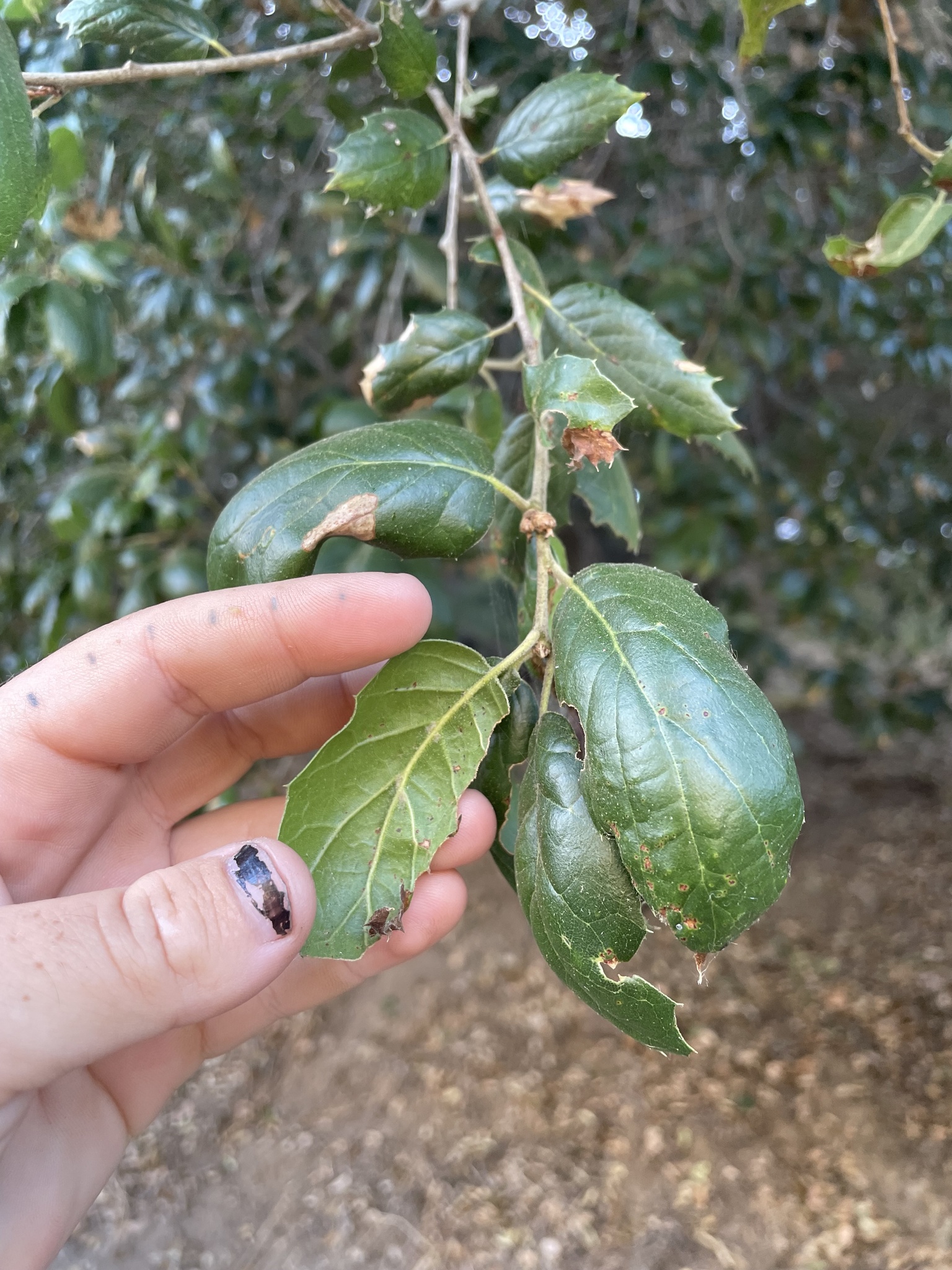
[*Photo by @salvmell on iNaturalist*](https://www.inaturalist.org/observations/229620709)
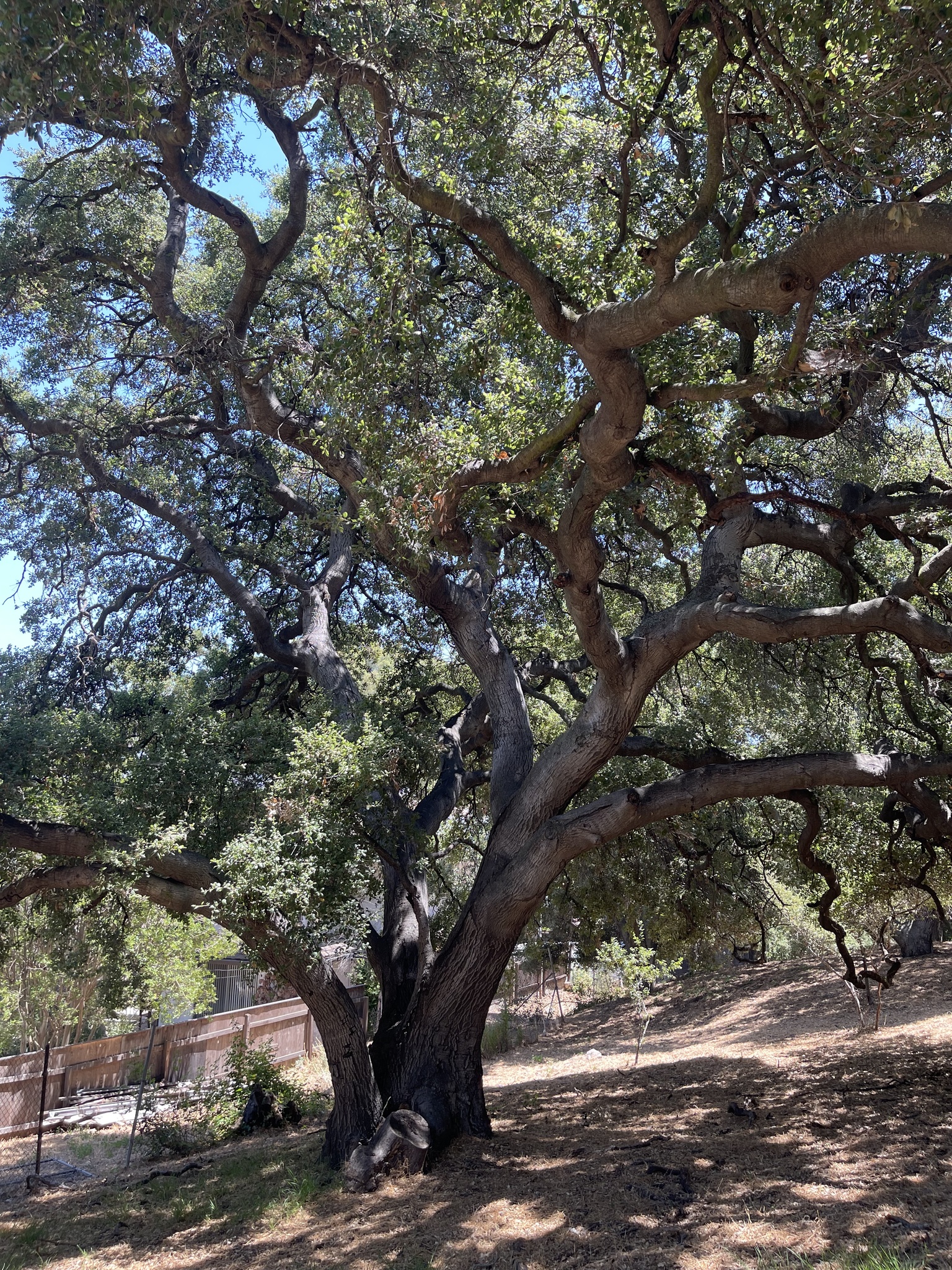
[*Photo by @klicklo on iNaturalist*](https://www.inaturalist.org/observations/231071724)
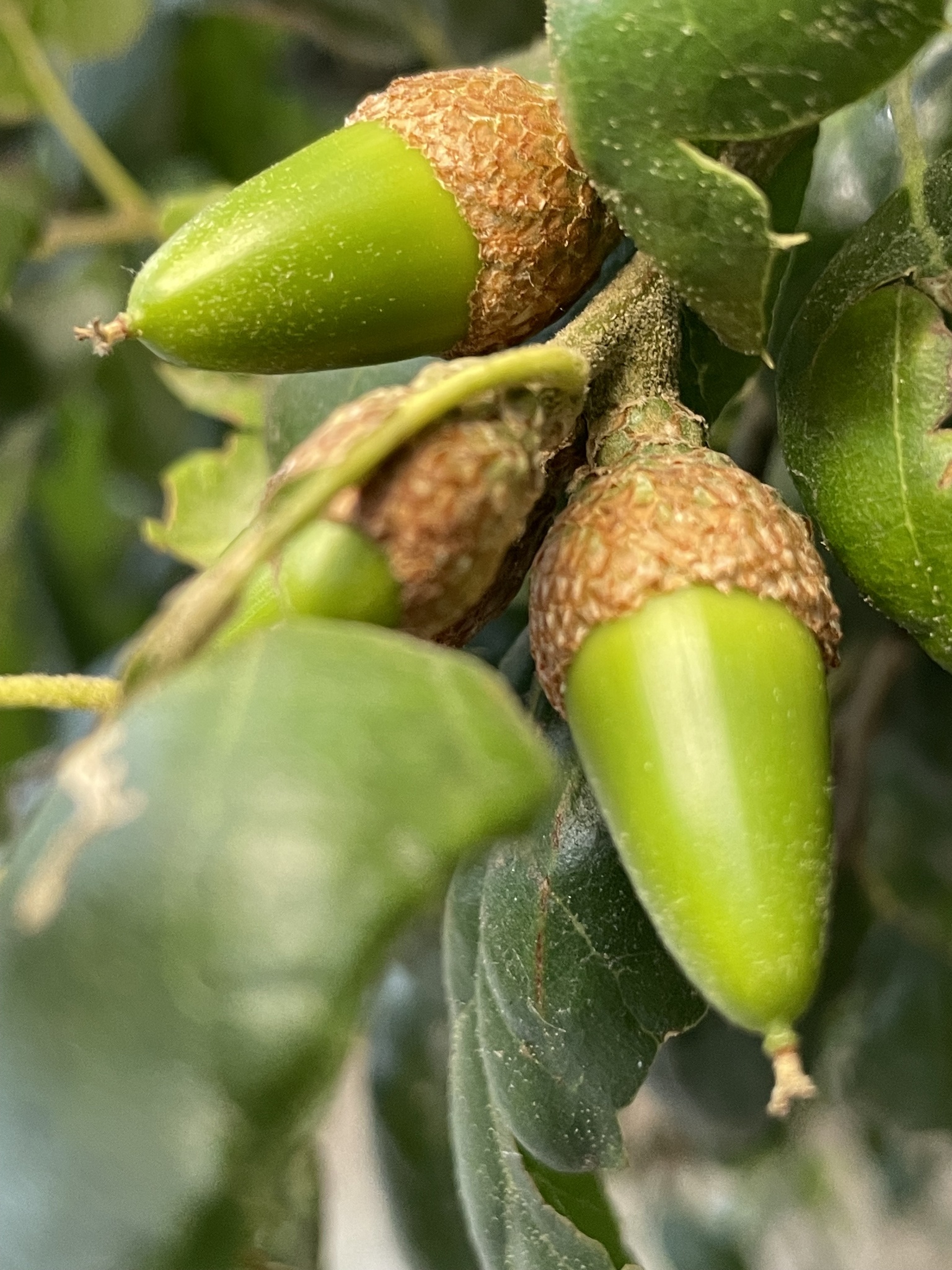
[*Photo by @adirado on iNaturalist*](https://www.inaturalist.org/observations/128096413)
## Southern Coast Live Oak - QAO (*Quercus agrifolia var. oxyadenia*)
Most people think all the *Quercus agrifolia* in the Altadena area are the QAA variety, but this is another more rare type that you may run into. The distinguishing factor is the degree of how tomentose (covered in a dense layer of short, matted, woolly hairs or down) the abaxial (the underside of the leaves) leaf surface is.
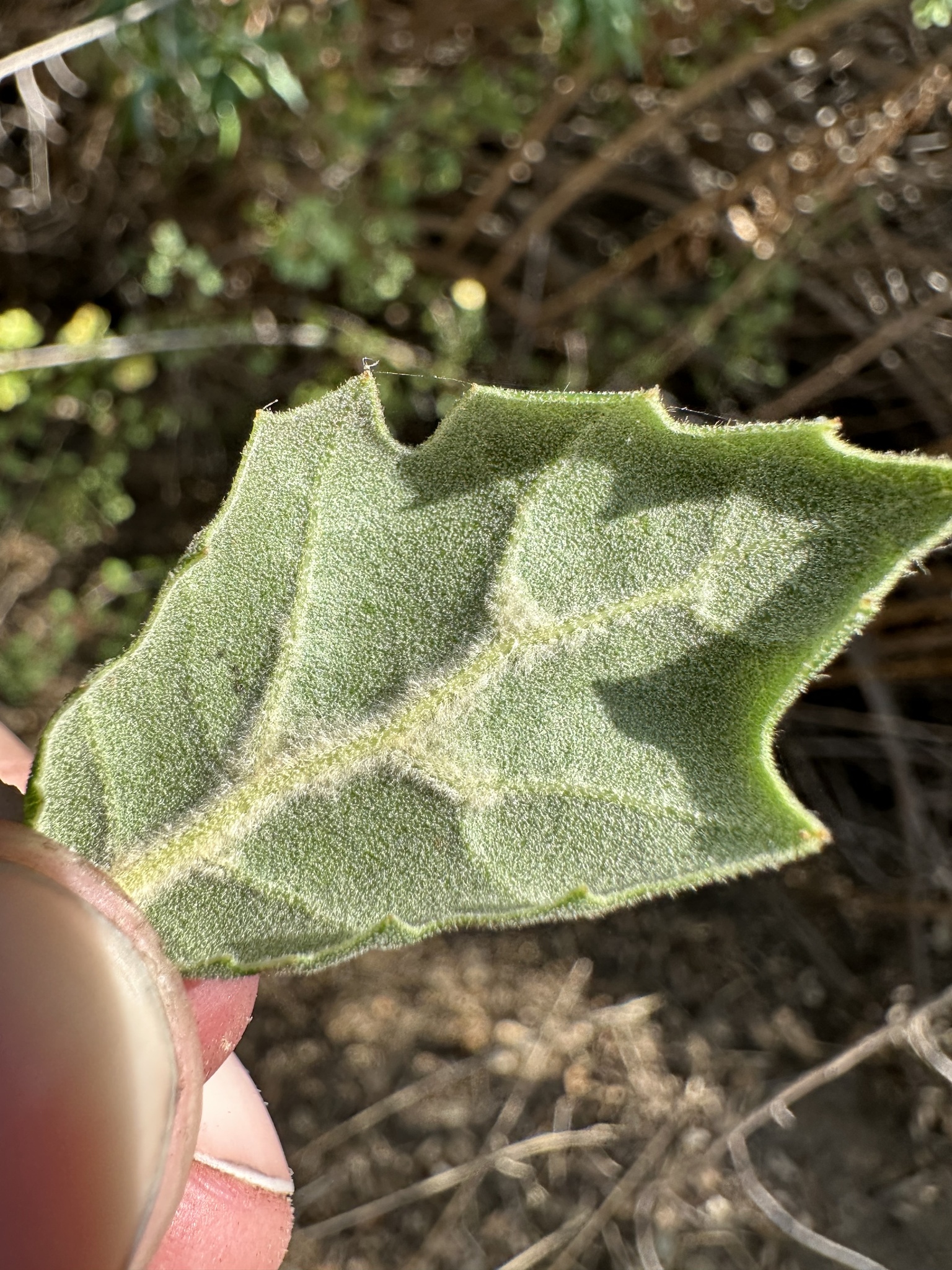
[*Photo by @possiblybuddha on iNaturalist*](https://www.inaturalist.org/observations/188736070)
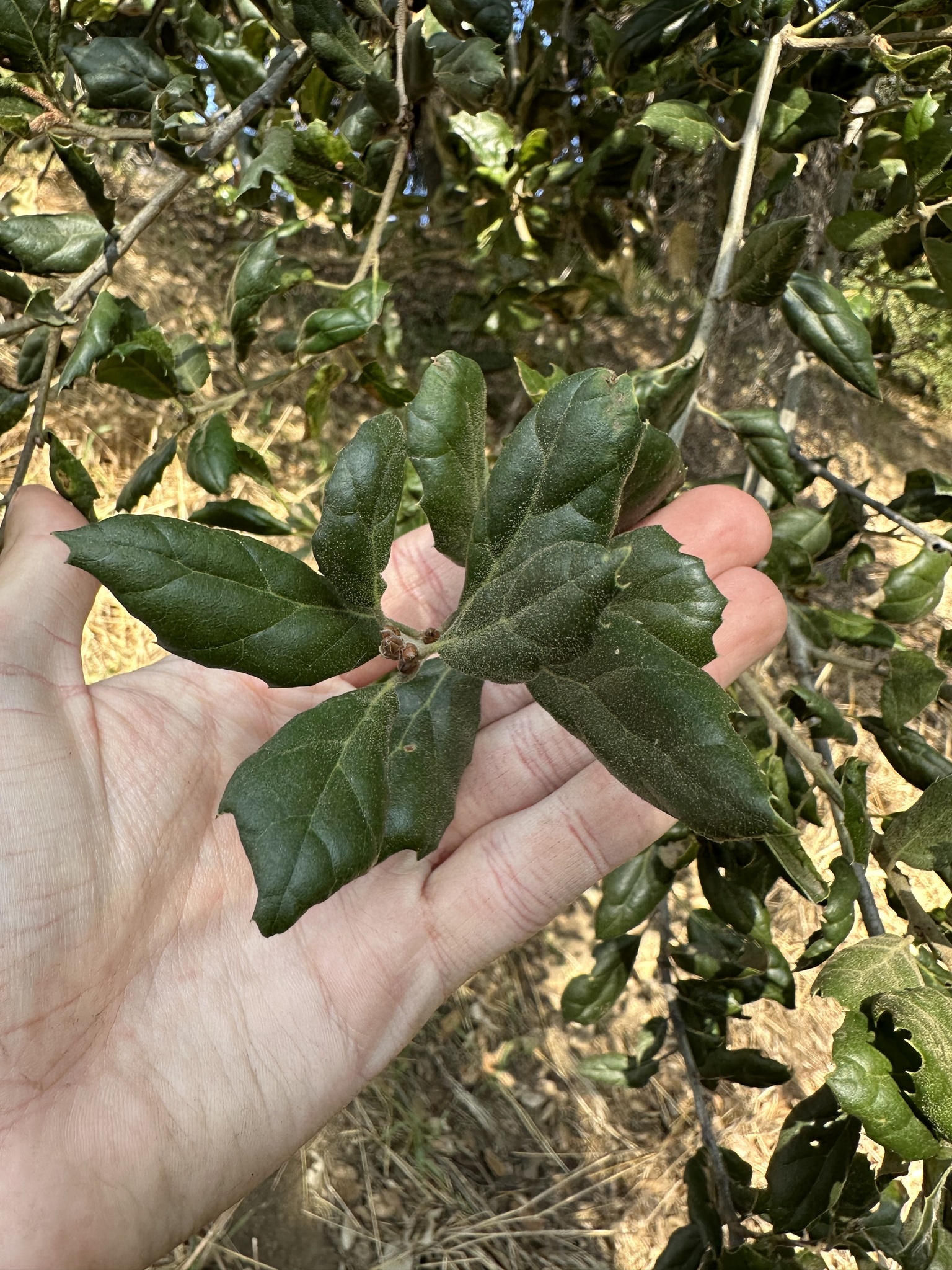
[*Photo by @possiblybuddha on iNaturalist*](https://www.inaturalist.org/observations/188736070)
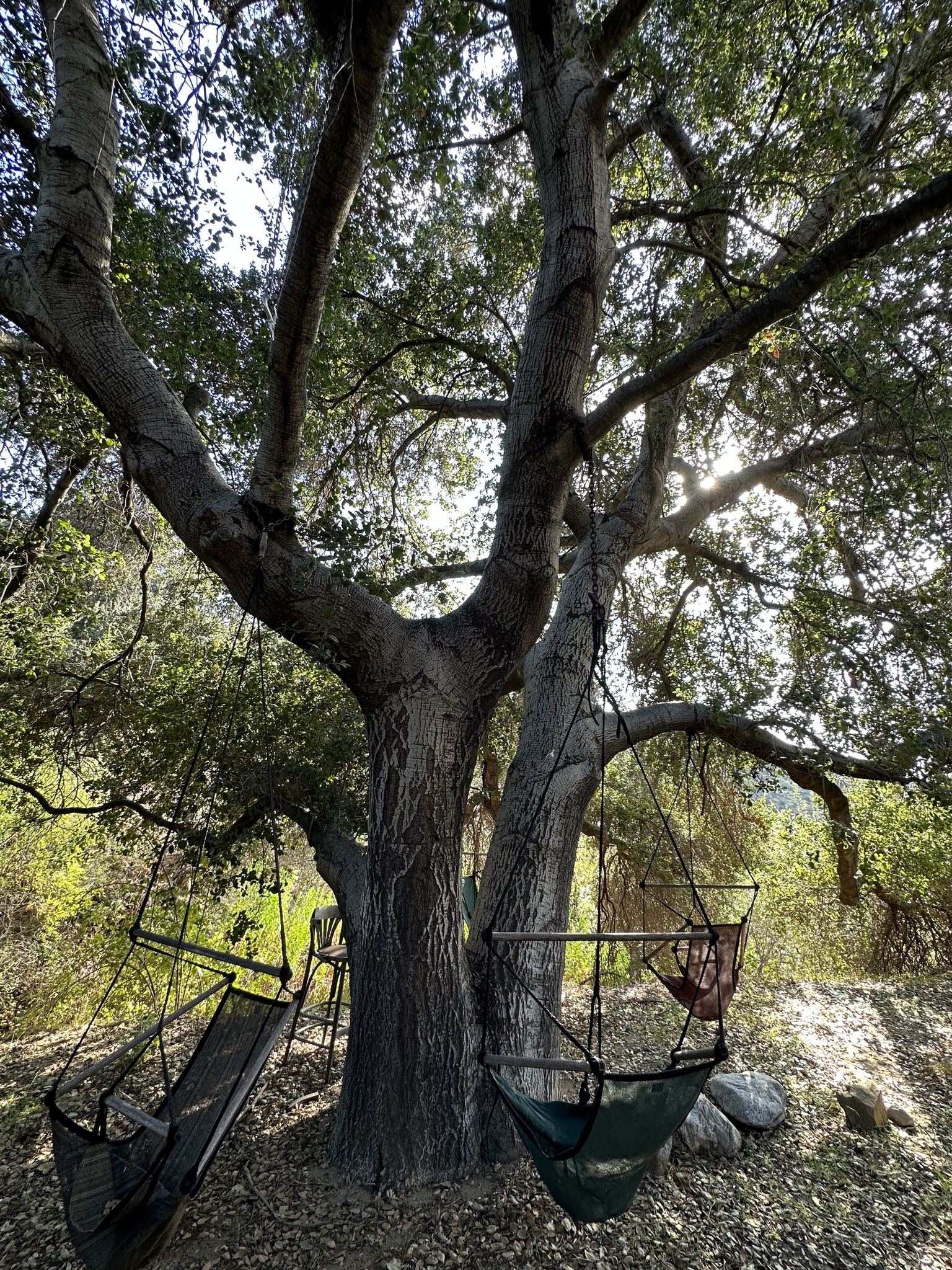
[*Photo by @possiblybuddha on iNaturalist*](https://www.inaturalist.org/observations/188736070)
## Interior Live Oak - QW (*Quercus wislizeni*)
If you are hiking up in the San Gabriels at elevations above ~3000ft, you may run into oak with a shrub-like growth habit (in our area), and acorns that look similar to QAA.
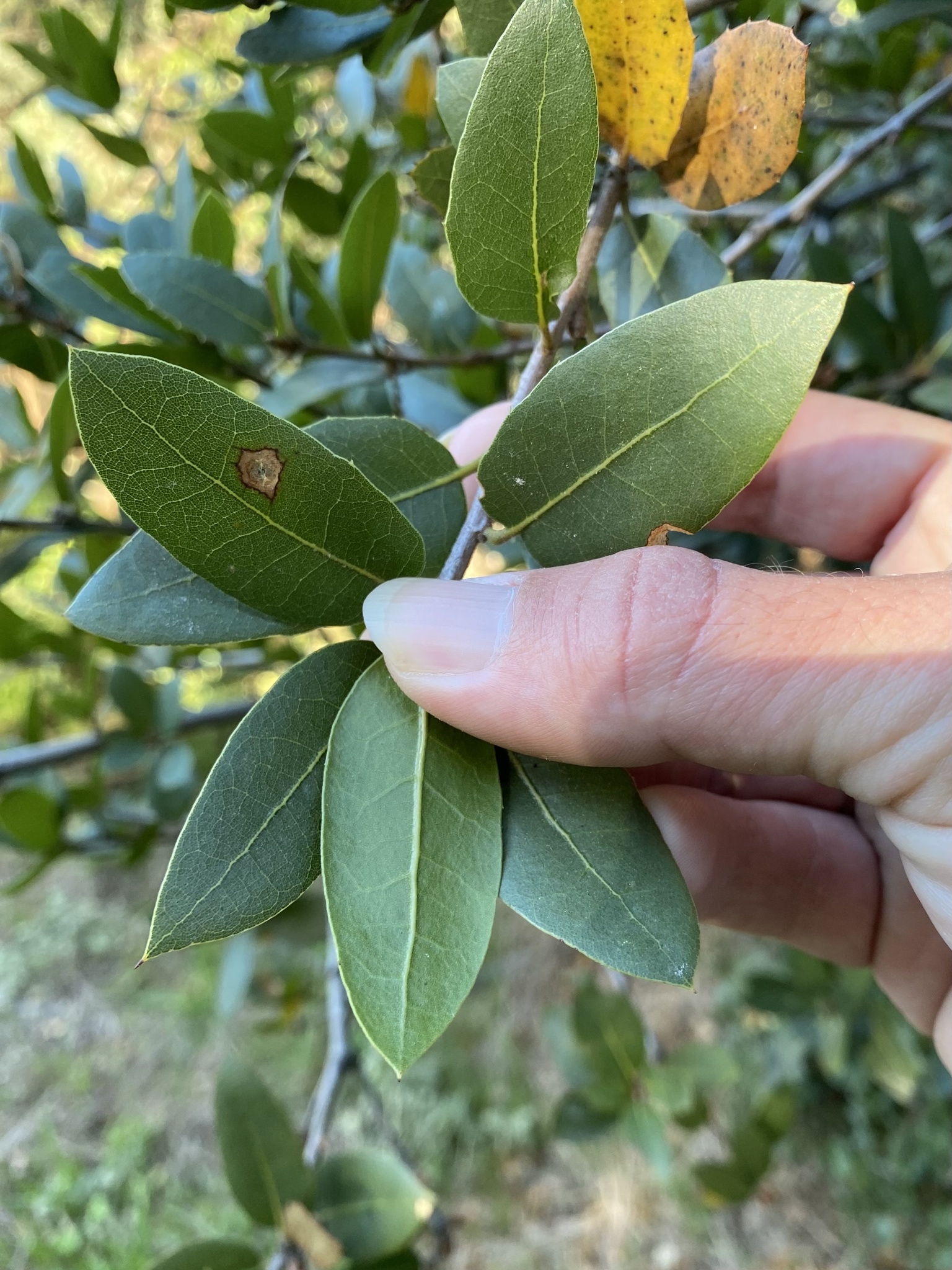
[*Photo by @patrickdyer on iNaturalist*](https://www.inaturalist.org/observations/195130430)
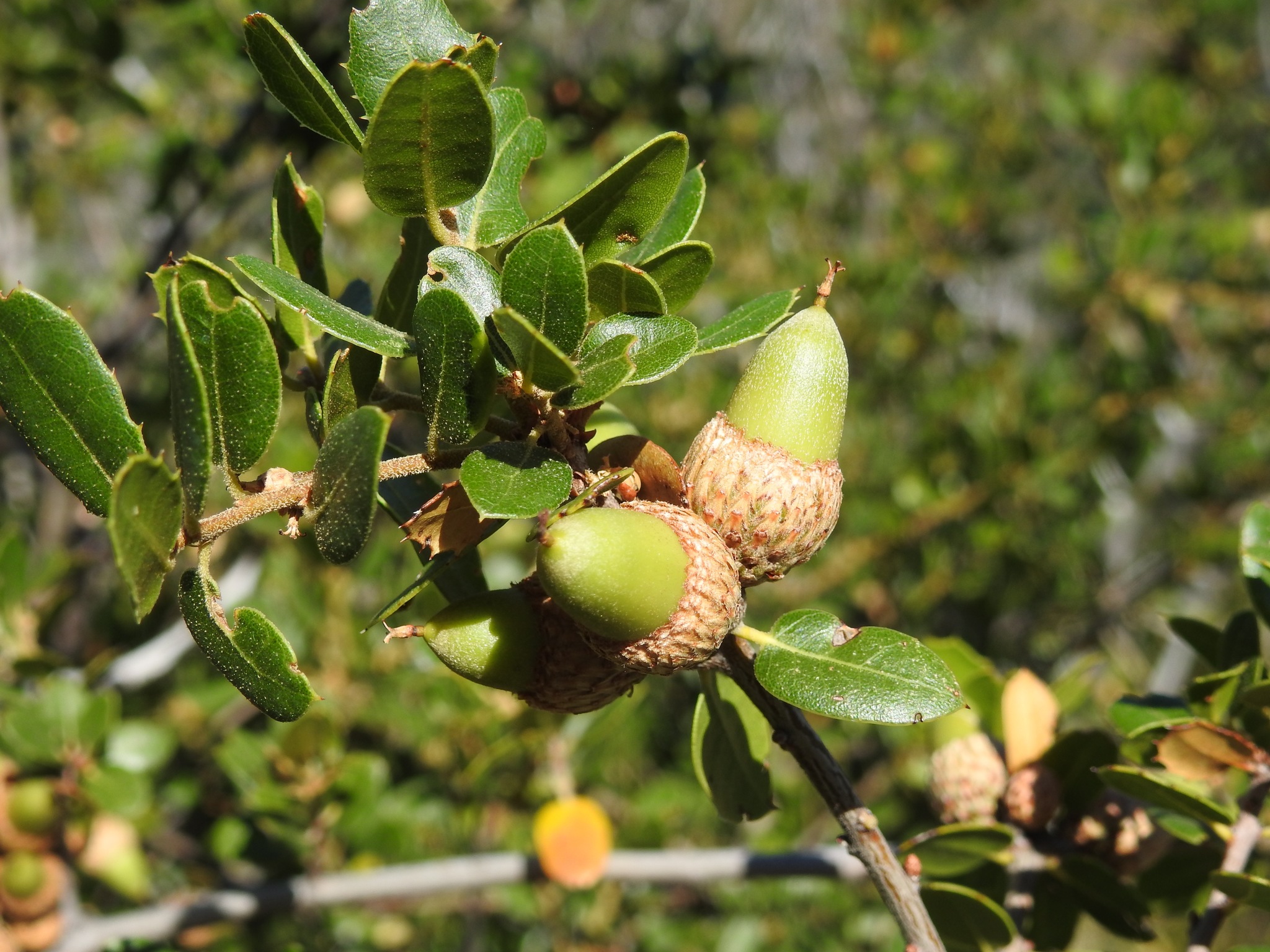
[*Photo by @bryanbrasmussen on iNaturalist*](https://www.inaturalist.org/observations/7157076)
*This work by Max Yasuda is licensed under CC BY-NC 4.0
